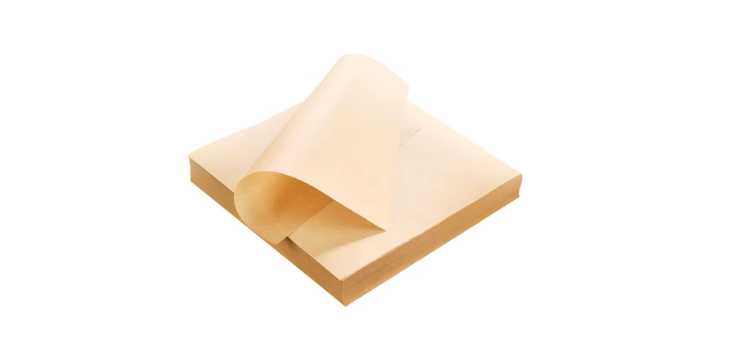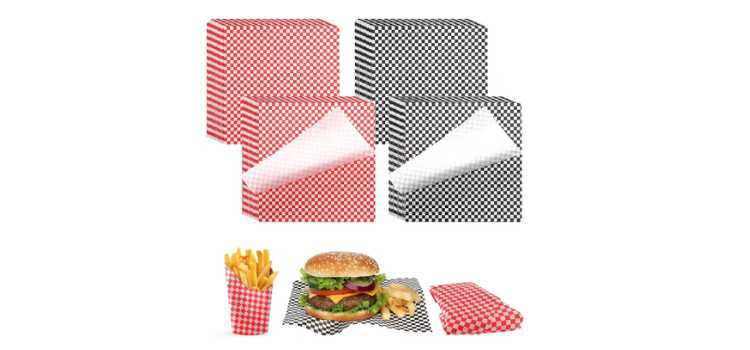As an Amazon Associate, I earn from qualifying purchases

Deli paper is a staple in many kitchens, beloved for its versatility and practicality. Often used to wrap sandwiches, line baskets, or separate layers of food, deli paper is a go-to for many culinary applications. Its grease-resistant nature makes it an invaluable tool for maintaining food quality and presentation.
However, when it comes to using deli paper in the oven, many home cooks find themselves uncertain about its safety and capabilities. Understanding whether deli paper can withstand oven temperatures without compromising food safety or causing accidents is crucial for anyone looking to maximize its utility in the kitchen.
Materials Used in Deli Paper
Typical Materials and Their Properties
Deli paper is typically made from a blend of paper and a thin layer of polyethylene or wax. This composition gives the paper its signature grease-resistant quality, allowing it to effectively contain oily or moist foods without soaking through.
The paper component provides structure and absorbency, while the polyethylene or wax coating acts as a barrier to moisture and grease.
Heat Resistance and Safety Features of Deli Paper
While deli paper is excellent for cold and room-temperature applications, its heat resistance is limited. Most deli papers are not designed to withstand the high temperatures of an oven. The wax or polyethylene coating can melt or even catch fire under extreme heat, making it unsuitable for direct use in an oven.
However, some commercial-grade deli papers might be treated to endure mild heat, but they typically aren’t rated for temperatures above 200°F (93°C). Before using deli paper in any heating application, it’s essential to understand these limitations to ensure both food safety and fire prevention.
Potential Risks and Safety Considerations
Risks Associated with Using Deli Paper in the Oven
The primary risk of using deli paper in the oven is its susceptibility to high temperatures. The coatings on the paper, whether wax or polyethylene, can melt, releasing potentially harmful chemicals into the food.
Additionally, if exposed to open flame or high heat, deli paper can ignite, posing a fire hazard. This makes it crucial to avoid using deli paper in any situation where it might come into direct contact with high oven temperatures.
Guidelines for Avoiding Fire Hazards and Safety Concerns
To mitigate risks, it’s advisable never to use deli paper in an oven unless specifically indicated as oven-safe by the manufacturer. Instead, use materials designed for heat resistance, such as parchment paper or aluminum foil.
If you must use deli paper, ensure it’s kept away from direct heat sources and heated only at very low temperatures, ideally below its melting point. Always supervise any cooking process involving deli paper to quickly address potential hazards.
Practical Tips for Using Deli Paper in the Oven

Best Practices for Safe Oven Use
If you’re determined to use deli paper in the oven, here are some tips to do so safely:
- Low Temperatures Only: Limit oven use to very low temperatures, ideally below 200°F (93°C), to prevent the coating from melting.
- Indirect Heat: Place the deli paper on a baking sheet rather than directly on an oven rack to avoid direct heat exposure.
- Short Durations: Keep cooking times short to minimize heat exposure.
- Avoid Direct Flames: Ensure the paper is not in contact with any direct flames or broiler settings.
Suitable Alternatives to Deli Paper for Baking and Cooking
Instead of deli paper, consider using alternatives that are specifically designed for oven use, such as:
- Parchment Paper: Oven-safe up to 450°F (232°C), it’s perfect for baking and roasting.
- Aluminum Foil: Offers heat resistance and is suitable for high-temperature cooking.
- Silicone Baking Mats: Reusable and safe for oven use, providing a non-stick surface for baking.
Conclusion
Understanding the limitations and risks associated with using deli paper in the oven helps prevent accidents and ensures safe cooking practices. While deli paper excels in many kitchen applications, its use in the oven should be approached with caution.
By adhering to safety guidelines and considering alternative materials designed for high-heat environments, you can continue to enjoy the benefits of deli paper without compromising safety.
FAQ
Can I put sandwich paper in the oven?
Sandwich paper, often similar to deli paper, is not designed for oven use. Its coatings can melt or catch fire at high temperatures, posing safety risks. For oven applications, opt for materials like parchment paper or aluminum foil, which are specifically designed for heat resistance.
Can dry wax paper go in the oven?
Dry wax paper is not suitable for oven use as the wax can melt at high temperatures, potentially causing smoke or fire. Instead, use parchment paper which is safe for baking and can withstand oven temperatures up to 450°F (232°C).
Is deli paper and parchment paper the same?
Deli paper and parchment paper are not the same. Deli paper is typically wax-coated and used for wrapping foods, while parchment paper is specially treated to be non-stick and heat-resistant, making it suitable for baking and culinary use in high-temperature settings.
Can paper be put in the oven?
Not all paper is oven-safe. Regular paper, including some deli and sandwich papers, can burn or release harmful chemicals. Use oven-safe options like parchment paper or silicone mats, designed to withstand high temperatures without safety risks, for your baking and cooking needs.
As an Amazon Associate, I earn from qualifying purchases